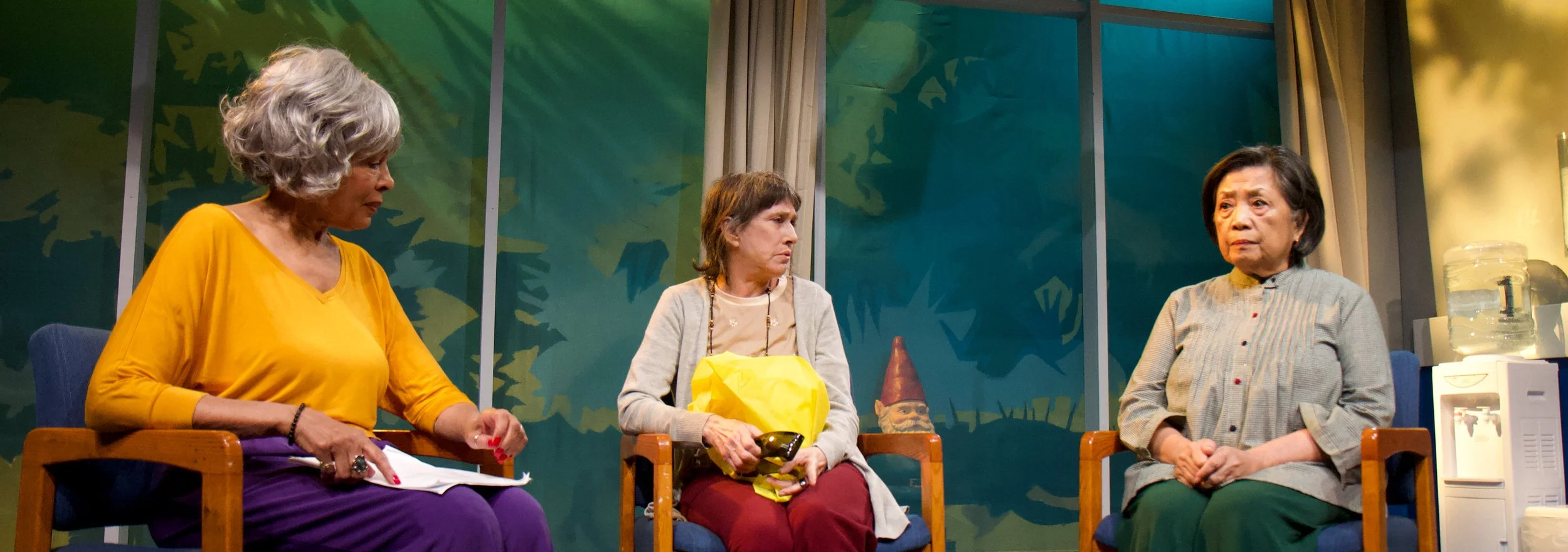The aims of a playwright are not so different from those of a painter—both endeavor to present a representation of life that is viewed through the prism of their ideals. In Marie Antoinette: The Color of Flesh, Joel Gross has crafted such a richly imagined portrait of the life of the Queen, a friend, and their lover, that it’s easy to forget one’s history. With exquisite performances from the actors, the viewer is drawn into this fictional microcosm—a portrait in miniature that allows Gross to tell a sweeping tale that covers 20 years of the Queen’s life, leading up to the Revolution. If the ways in which history is bent to the interest of the artist are a bit too perfect, the flawless acting and the grace of the direction make it seem natural. After all, such perfection is expected, and admired, in a work of art. In Gross’s story, Marie is a pawn in the perverse love games of two manipulators: Elisabeth Louise Vigee le Brun, a beautiful young portraitist, and Count Alexis de Ligne, an ironic liberal. At the start of the play, Elisabeth, played with cruel flippancy by Samantha Ives, is seeking to gain royal favor to further her career. The opening scene sketches and nearly fills in her character: a charming, witty, but highly insensitive woman of low birth. The unevenness of the character—sometimes malicious, at other times tearful, gives Ms. Ives occasional trouble, but overall she manages Elisa’s mood swings and her impressive self-importance adroitly.
As Elisa paints she spars with her more-than subject, the Count, whom she mocks for his nobility. Their early flirtations humorously establish the tensions that will later tear them, and France, apart. At this point, however, class is the butt of every joke, and Elisa commands each punch line. Until Marie Antoinette, the 19-year-old Queen of France shows up, occasionally interfering, but also unintentionally fulfilling the painter and the Count’s designs. Though guileless and woefully stupid, the seemingly innocent Queen upsets the relations between the duo, setting in motion a dangerous ménage et trois that imperils them all.
As Marie, Amanda Jones is perfectly regal and excitingly free. In particular, in a scene in which Marie details the horrors of her deflowering by her husband, Louis XVI, Jones is as lovely as a portrait and yet refuses to remain still—she is the buzzing center of energy around which the other characters revolve. And despite her flaws, her girlish infatuations, and her ignorance, Jones’s Marie is quite sympathetic.
In rendering Marie as a hopelessly and helplessly sweet person Gross uses his boldest strokes. By making Marie sympathetic (a trait that emphasizes the wicked guile of those who use her), his queen is the victim. At one point Elisa says Marie was “born to be devoured by the mob.” Her friends who have likewise devoured her are therefore responsible for setting her downfall in motion.
Of course, with such a pathetic Marie at its center, the play gives little credit to what the Queen refers to as “the rabble.” The mob beyond Versailles is given voice through Alexis (an admirably game Jonathan Kells Phillips), who is made out to be an idealistic fool. By extension, the Revolution is represented as chaotic folly. While Marie falls victim to the intriguers, the revolting peasants are lawless monsters who cruelly mock the imprisoned Marie by giving her funeral flowers. Gross reverses the traditional caricature: while Marie is a fleshed out character with a range of emotions (not reduced to one fateful line), the peasantry is a faceless mob making impossible demands and baseless accusations.
Director Robert Kalfin puts the finishing touches on Gross’s portrait by placing his actors within frames onstage, with appropriately dramatic lighting and posturing. The audience’s gaze lingers the exquisite details of court life, specifically the costumes, designed by T. Michael Hall, which are gorgeous representations of the sumptuousness Elisa endeavors to capture on canvas.
In keeping with Gross’s tightly woven narrative, he uses controlling metaphors to emphasize the play’s themes. At its height, the era’s elegance is reflected in an impeccably dressed and mannered (i.e. silent) footman (Hugo Salazar, Jr.) who gracefully introduces characters and scenes. As the terror mounts, the footman becomes increasingly surly until he finally tosses off his powdered wig in anger. Standing in for the disgruntled peasantry, the footman is a simple means of representing the emotions of the lower class.
This representation underscores the focus of the show: the peasants are the unseen and unknown beyond the palace. Far more important to this story are the rises and falls of Marie’s temperament, and status. Though the victimization of Marie, and the opportunism of both Elisa and the playwright, can be frustrating given the historical context, the play is a touching, humorous portrait of the things in its frame.






